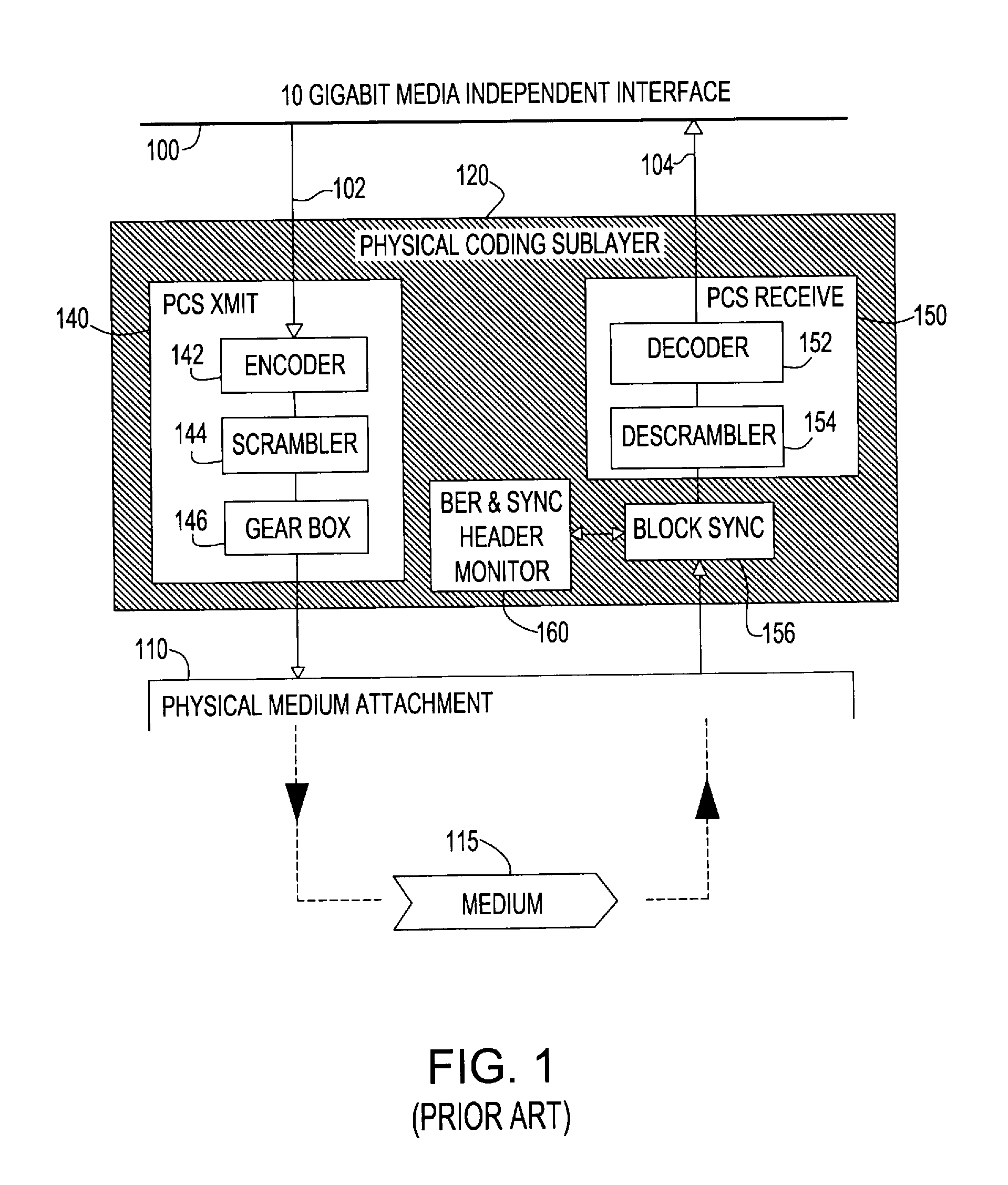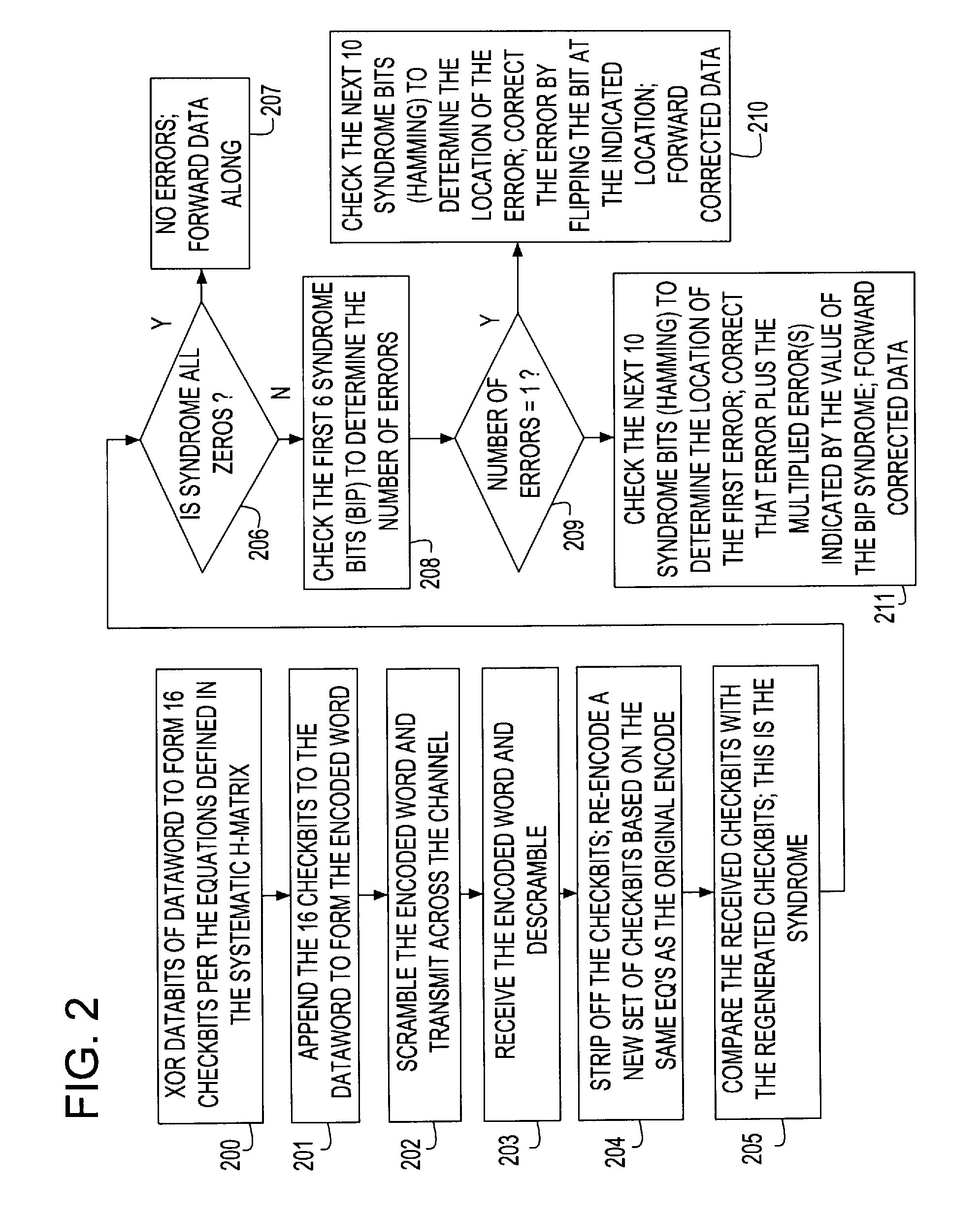Forward error correction encoding for multiple link transmission compatible with 64B/66B scrambling
a multiple link transmission and error correction technology, applied in the field of high-speed digital communication systems, can solve the problems of receivers losing track of when to sample the incoming data, introducing additional errors, and data transmission subject to corruption and errors, and achieves the effects of low overhead, easy correction, and higher bandwidth
- Summary
- Abstract
- Description
- Claims
- Application Information
AI Technical Summary
Benefits of technology
Problems solved by technology
Method used
Image
Examples
Embodiment Construction
[0030]In the following detailed description of embodiments, reference is made to the accompanying drawings which form a part hereof, and in which are shown by way of illustration specific embodiments that are described in sufficient detail to enable those skilled in the art to practice the invention, and it is to be understood that other embodiments may be utilized and logical, structural, electrical and other changes may be made without departing from the scope of the present invention.
[0031]According to a first embodiment a FEC code is disclosed that is compatible with the scrambler used by the 64B / 66B encoding for transmission on SerDes channel links with a lower overhead (2 / 64 or 3%) than 8B / 10B encoding (2 / 8 or 25%). The FEC code according to a first embodiment requires encoding and decoding to occur before scrambling and after descrambling, respectively, so as to preserve the properties of the scrambling operation on the transmitted signal. The proposed code allows the correct...
PUM
 Login to View More
Login to View More Abstract
Description
Claims
Application Information
 Login to View More
Login to View More - R&D
- Intellectual Property
- Life Sciences
- Materials
- Tech Scout
- Unparalleled Data Quality
- Higher Quality Content
- 60% Fewer Hallucinations
Browse by: Latest US Patents, China's latest patents, Technical Efficacy Thesaurus, Application Domain, Technology Topic, Popular Technical Reports.
© 2025 PatSnap. All rights reserved.Legal|Privacy policy|Modern Slavery Act Transparency Statement|Sitemap|About US| Contact US: help@patsnap.com



